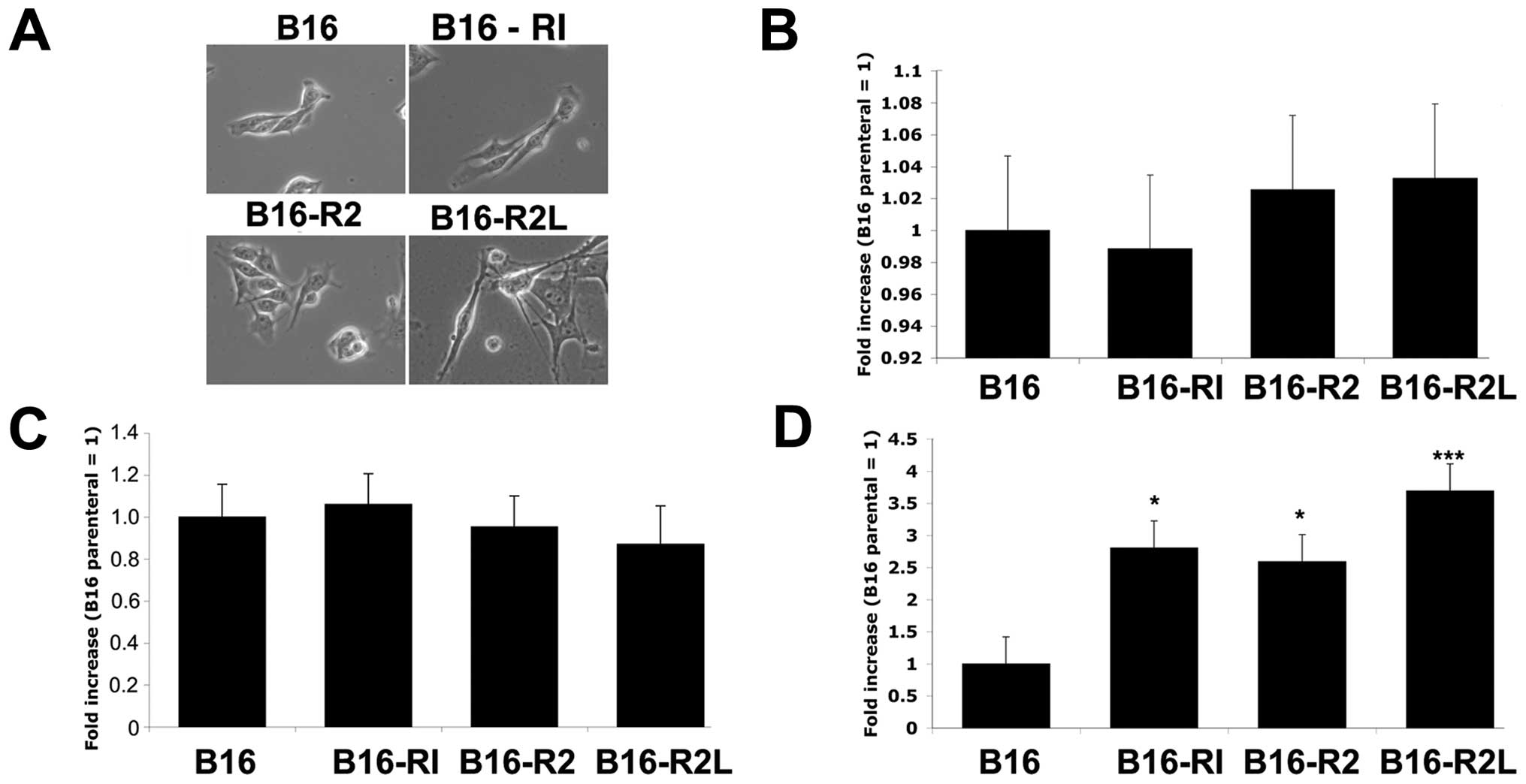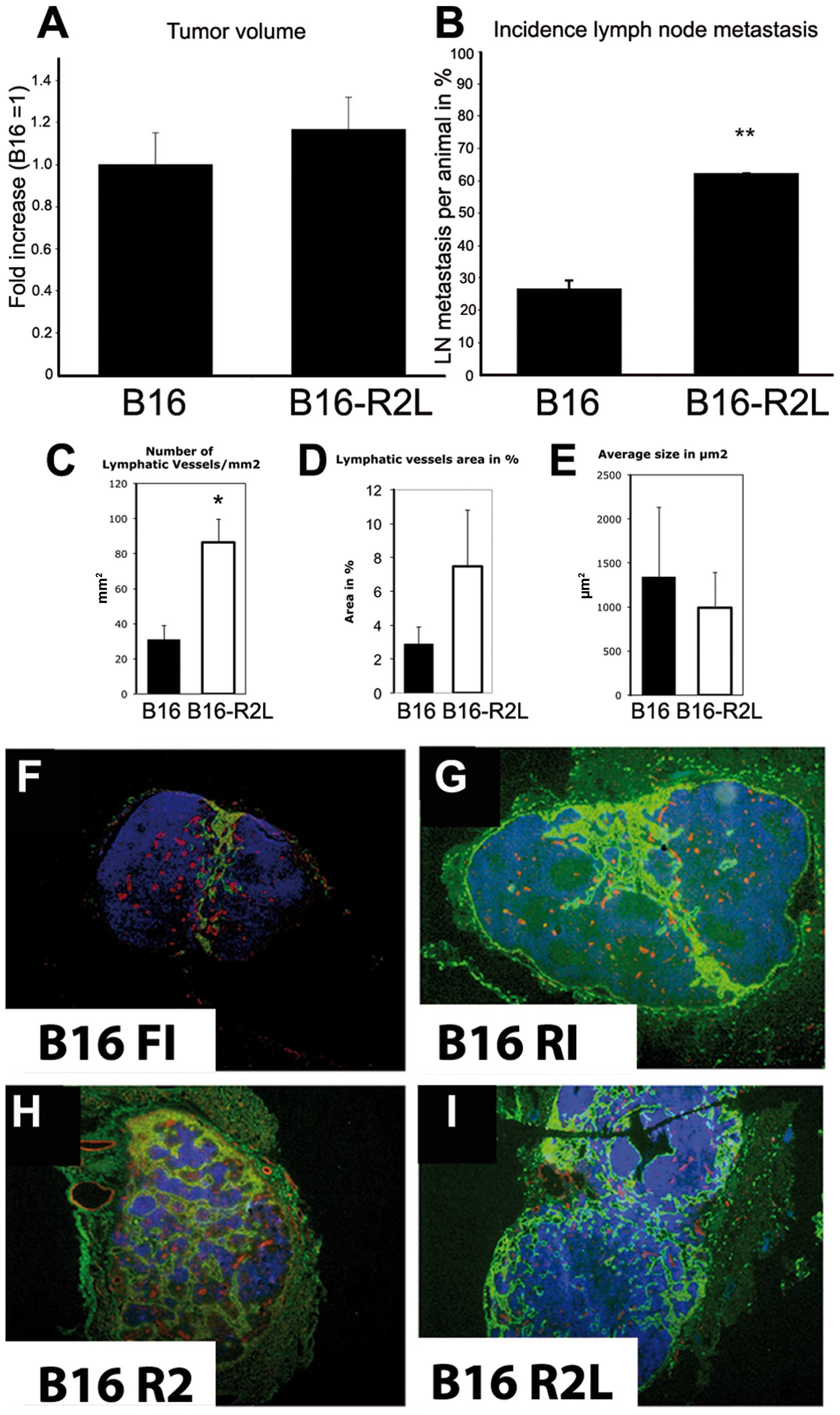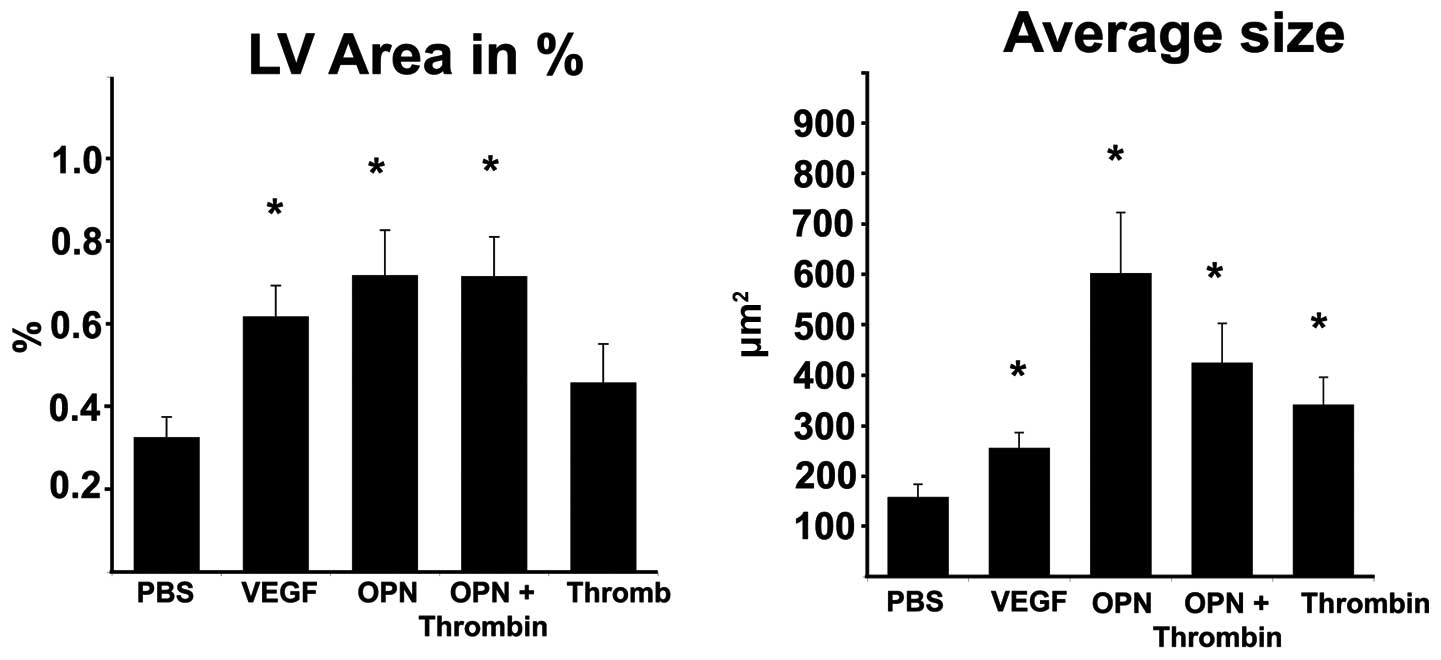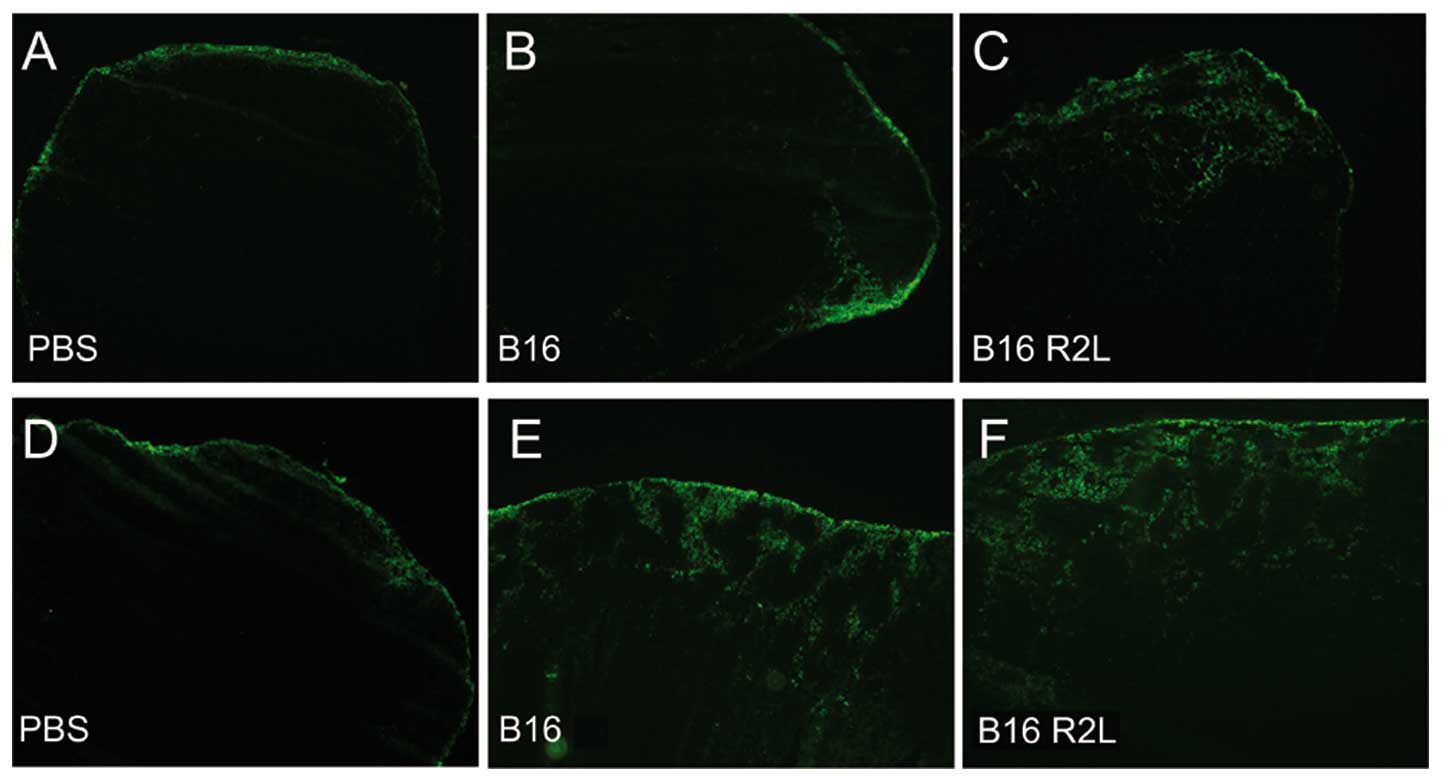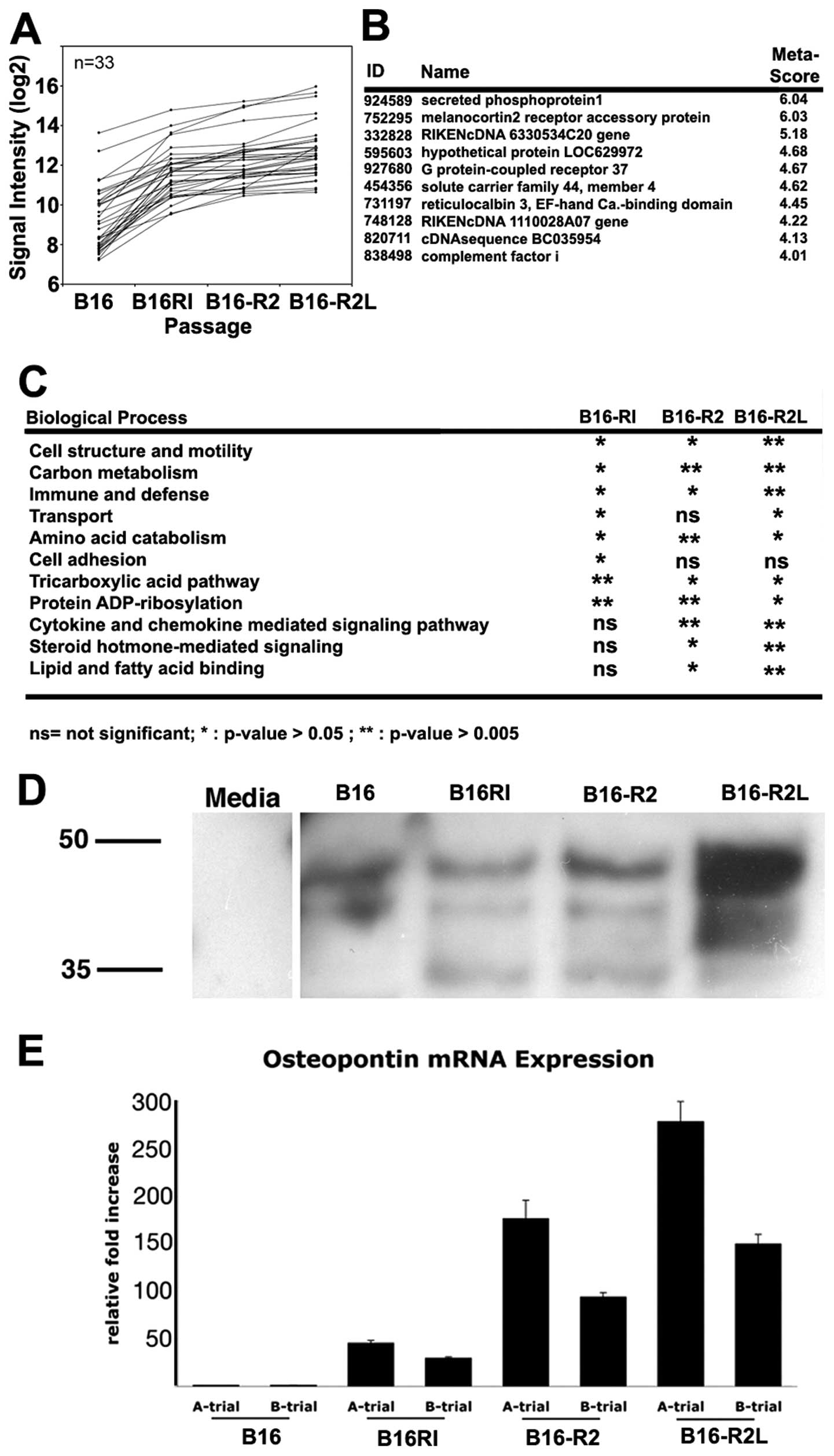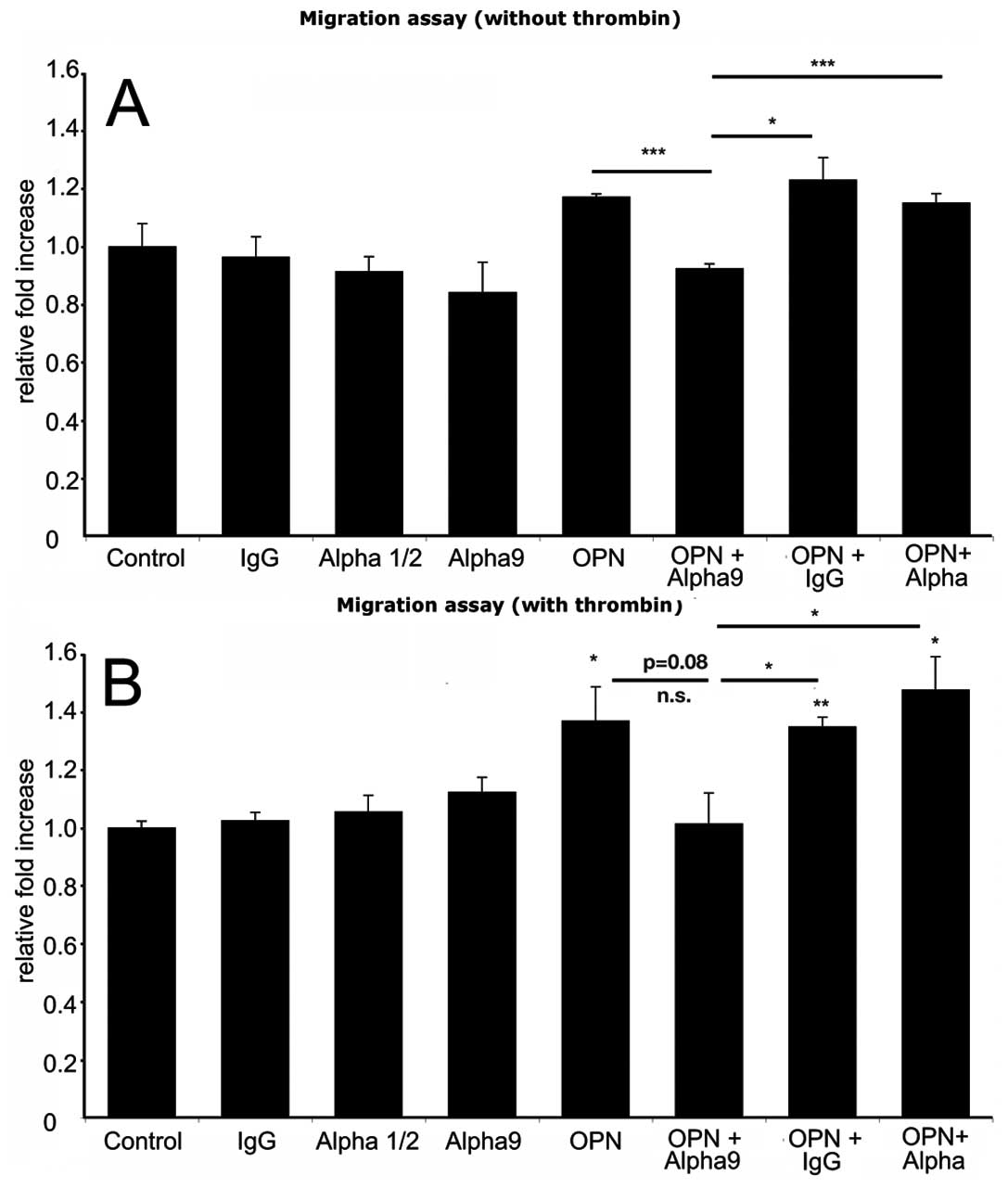|
1
|
Dadras SS, Lange-Asschenfeldt B, Velasco
P, et al: Tumor lymphangiogenesis predicts melanoma metastasis to
sentinel lymph nodes. Mod Pathol. 1232–1242. 2005. View Article : Google Scholar : PubMed/NCBI
|
|
2
|
He Y, Rajantie I, Pajusola K, et al:
Vascular endothelial cell growth factor receptor 3-mediated
activation of lymphatic endothelium is crucial for tumor cell entry
and spread via lymphatic vessels. Cancer Res. 65:4739–4746. 2005.
View Article : Google Scholar : PubMed/NCBI
|
|
3
|
Hirakawa S, Kodama S, Kunstfeld R, Kajiya
K, Brown LF and Detmar M: VEGF-A induces tumor and sentinel lymph
node lymphangiogenesis and promotes lymphatic metastasis. J Exp
Med. 201:1089–1099. 2005. View Article : Google Scholar : PubMed/NCBI
|
|
4
|
Skobe M, Hawighorst T, Jackson DG, et al:
Induction of tumor lymphangiogenesis by VEGF-C promotes breast
cancer metastasis. Nat Med. 7:192–198. 2001. View Article : Google Scholar : PubMed/NCBI
|
|
5
|
Stacker SA, Caesar C, Baldwin ME, et al:
VEGF-D promotes the metastatic spread of tumor cells via the
lymphatics. Nat Med. 7:186–191. 2001. View
Article : Google Scholar : PubMed/NCBI
|
|
6
|
McGuire WL: Prognostic factors for
recurrence and survival in human breast cancer. Breast Cancer Res
Treat. 10:5–9. 1987. View Article : Google Scholar : PubMed/NCBI
|
|
7
|
Foster RS Jr: The biologic and clinical
significance of lymphatic metastases in breast cancer. Surg Oncol
Clin N Am. 5:79–104. 1996.PubMed/NCBI
|
|
8
|
Balch CM, Soong SJ, Gershenwald JE, et al:
Prognostic factors analysis of 17,600 melanoma patients: validation
of the American Joint Committee on Cancer melanoma staging system.
J Clin Oncol. 19:3622–3634. 2001.
|
|
9
|
Mandriota SJ, Jussila L, Jeltsch M, et al:
Vascular endothelial growth factor-C-mediated lymphangiogenesis
promotes tumour metastasis. EMBO J. 20:672–682. 2001. View Article : Google Scholar
|
|
10
|
Dadras SS, Paul T, Bertoncini J, et al:
Tumor lymphangiogenesis: a novel prognostic indicator for cutaneous
melanoma metastasis and survival. Am J Pathol. 162:1951–1960. 2003.
View Article : Google Scholar : PubMed/NCBI
|
|
11
|
Hirakawa S, Brown LF, Kodama S, Paavonen
K, Alitalo K and Detmar M: VEGF-C-induced lymphangiogenesis in
sentinel lymph nodes promotes tumor metastasis to distant sites.
Blood. 109:1010–1017. 2007. View Article : Google Scholar : PubMed/NCBI
|
|
12
|
Hay JB and Hobbs BB: The flow of blood to
lymph nodes and its relation to lymphocyte traffic and the immune
response. J Exp Med. 145:31–44. 1977. View Article : Google Scholar : PubMed/NCBI
|
|
13
|
Cahill RN, Frost H and Trnka Z: The
effects of antigen on the migration of recirculating lymphocytes
through single lymph nodes. J Exp Med. 143:870–888. 1976.
View Article : Google Scholar : PubMed/NCBI
|
|
14
|
Hall JG and Morris B: The immediate effect
of antigens on the cell output of a lymph node. Br J Exp Pathol.
46:450–454. 1965.PubMed/NCBI
|
|
15
|
He Y, Kozaki K, Karpanen T, et al:
Suppression of tumor lymphangiogenesis and lymph node metastasis by
blocking vascular endothelial growth factor receptor 3 signaling. J
Natl Cancer Inst. 94:819–825. 2002. View Article : Google Scholar : PubMed/NCBI
|
|
16
|
Detmar M and Hirakawa S: The formation of
lymphatic vessels and its importance in the setting of malignancy.
J Exp Med. 196:713–718. 2002. View Article : Google Scholar : PubMed/NCBI
|
|
17
|
Gehlsen KR and Hendrix MJ: In vitro assay
demonstrates similar invasion profiles for B16F1 and B16F10 murine
melanoma cells. Cancer Lett. 30:207–212. 1986. View Article : Google Scholar : PubMed/NCBI
|
|
18
|
Kajiya K, Hirakawa S, Ma B, Drinnenberg I
and Detmar M: Hepatocyte growth factor promotes lymphatic vessel
formation and function. EMBO J. 24:2885–2895. 2005. View Article : Google Scholar : PubMed/NCBI
|
|
19
|
Ishimatsu-Tsuji Y, Moro O and Kishimoto J:
Expression profiling and cellular localization of genes associated
with the hair cycle induced by wax depilation. J Invest Dermatol.
125:410–420. 2005. View Article : Google Scholar : PubMed/NCBI
|
|
20
|
Hirakawa S, Hong YK, Harvey N, et al:
Identification of vascular lineage-specific genes by
transcriptional profiling of isolated blood vascular and lymphatic
endothelial cells. Am J Pathol. 162:575–586. 2003. View Article : Google Scholar
|
|
21
|
Reinmuth N, Liersch R, Raedel M, et al:
Combined anti-PDGFRalpha and PDGFRbeta targeting in non-small cell
lung cancer. Int J Cancer. 124:1535–1544. 2009. View Article : Google Scholar : PubMed/NCBI
|
|
22
|
Gentleman RC, Carey VJ, Bates DM, et al:
Bioconductor: open software development for computational biology
and bioinformatics. Genome Biol. 5:R802004. View Article : Google Scholar : PubMed/NCBI
|
|
23
|
Huber W, von Heydebreck A, Sultmann H,
Poustka A and Vingron M: Variance stabilization applied to
microarray data calibration and to the quantification of
differential expression. Bioinformatics. 18(Suppl 1): S96–S104.
2002. View Article : Google Scholar : PubMed/NCBI
|
|
24
|
Tai YC and Speed TP: A multivariate
empirical Bayes statistics for replicated microarray time course
data. Ann Stat. 34:2387–2412. 2006. View Article : Google Scholar
|
|
25
|
Thomas PD, Kejariwal A, Guo N, et al:
Applications for protein sequence-function evolution data:
mRNA/protein expression analysis and coding SNP scoring tools.
Nucleic Acids Res. 34:W645–W650. 2006. View Article : Google Scholar : PubMed/NCBI
|
|
26
|
Fisher B and Fisher ER: The
interrelationship of hematogenous and lymphatic tumor cell
dissemination. Surg Gynecol Obstet. 122:791–798. 1966.PubMed/NCBI
|
|
27
|
Harrell MI, Iritani BM and Ruddell A:
Tumor-induced sentinel lymph node lymphangiogenesis and increased
lymph flow precede melanoma metastasis. Am J Pathol. 170:774–786.
2007. View Article : Google Scholar : PubMed/NCBI
|
|
28
|
Ruddell A, Mezquita P, Brandvold KA, Farr
A and Iritani BM: B lymphocyte-specific c-Myc expression stimulates
early and functional expansion of the vasculature and lymphatics
during lymphomagenesis. Am J Pathol. 163:2233–2245. 2003.
View Article : Google Scholar
|
|
29
|
Brown LF, Papadopoulos-Sergiou A, Berse B,
et al: Osteopontin expression and distribution in human carcinomas.
Am J Pathol. 145:610–623. 1994.PubMed/NCBI
|
|
30
|
Casson AG, Wilson SM, McCart JA, et al:
ras mutation and expression of the ras-regulated genes osteopontin
and cathepsin L in human esophageal cancer. Int J Cancer.
72:739–745. 1997. View Article : Google Scholar : PubMed/NCBI
|
|
31
|
Denhardt DT, Giachelli CM and Rittling SR:
Role of osteopontin in cellular signaling and toxicant injury. Annu
Rev Pharmacol Toxicol. 41:723–749. 2001. View Article : Google Scholar : PubMed/NCBI
|
|
32
|
Rittling SR and Novick KE: Osteopontin
expression in mammary gland development and tumorigenesis. Cell
Growth Differ. 8:1061–1069. 1997.PubMed/NCBI
|
|
33
|
Rangaswami H, Bulbule A and Kundu GC:
Osteopontin: role in cell signaling and cancer progression. Trends
Cell Biol. 16:79–87. 2006. View Article : Google Scholar : PubMed/NCBI
|
|
34
|
Zhou Y, Dai DL, Martinka M, et al:
Osteopontin expression correlates with melanoma invasion. J Invest
Dermatol. 124:1044–1052. 2005. View Article : Google Scholar : PubMed/NCBI
|
|
35
|
Hayashi C, Rittling S, Hayata T, et al:
Serum osteopontin, an enhancer of tumor metastasis to bone,
promotes B16 melanoma cell migration. J Cell Biochem. 101:979–986.
2007. View Article : Google Scholar : PubMed/NCBI
|
|
36
|
Rangel J, Nosrati M, Torabian S, et al:
Osteopontin as a molecular prognostic marker for melanoma. Cancer.
112:144–150. 2008. View Article : Google Scholar : PubMed/NCBI
|
|
37
|
Haqq C, Nosrati M, Sudilovsky D, et al:
The gene expression signatures of melanoma progression. Proc Natl
Acad Sci USA. 102:6092–6097. 2005. View Article : Google Scholar : PubMed/NCBI
|
|
38
|
Gardner HA, Berse B and Senger DR:
Specific reduction in osteopontin synthesis by antisense RNA
inhibits the tumorigenicity of transformed Rat1 fibroblasts.
Oncogene. 9:2321–2326. 1994.PubMed/NCBI
|
|
39
|
Chakraborty G, Jain S and Kundu GC:
Osteopontin promotes vascular endothelial growth factor-dependent
breast tumor growth and angiogenesis via autocrine and paracrine
mechanisms. Cancer Res. 68:152–161. 2008. View Article : Google Scholar
|
|
40
|
Avraamides CJ, Garmy-Susini B and Varner
JA: Integrins in angiogenesis and lymphangiogenesis. Nat Rev
Cancer. 8:604–617. 2008. View Article : Google Scholar : PubMed/NCBI
|
|
41
|
Smith LL and Giachelli CM: Structural
requirements for alpha 9 beta 1-mediated adhesion and migration to
thrombin-cleaved osteopontin. Exp Cell Res. 242:351–360. 1998.
View Article : Google Scholar : PubMed/NCBI
|















